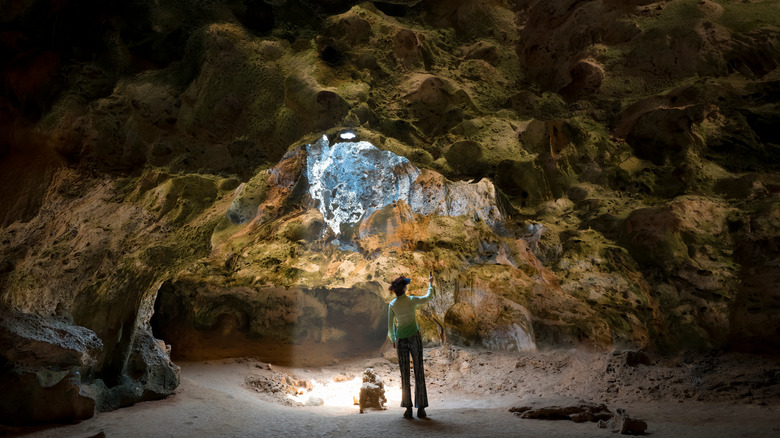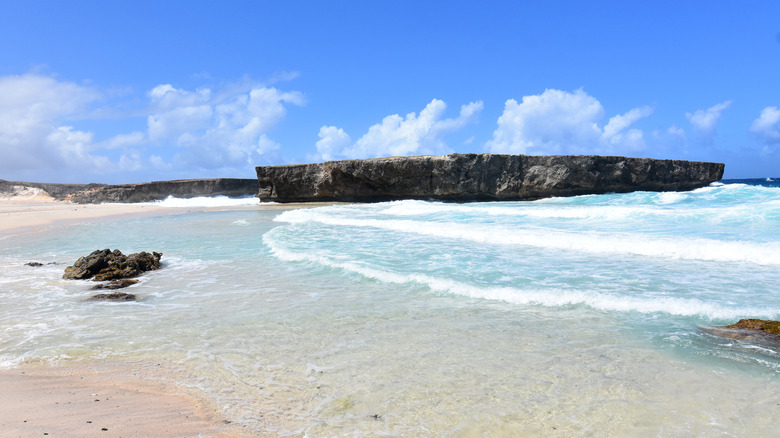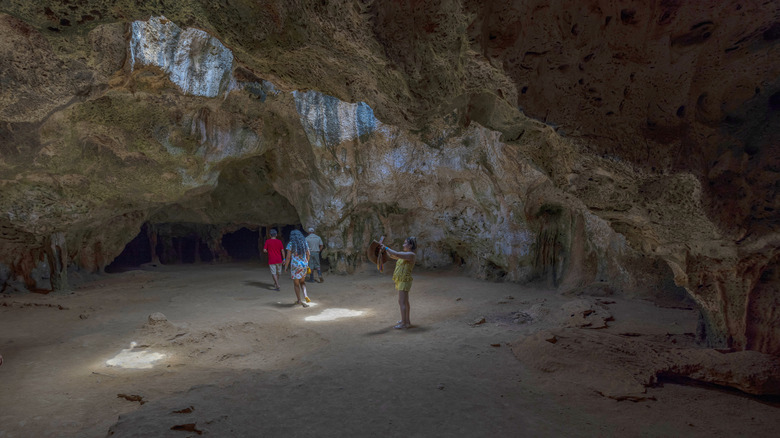Discover The Incredible Landscape Of This Popular Caribbean Island At Its Stunning National Park
On the east coast of Aruba, a must-visit Caribbean destination, Arikok National Park stands as a testament to the raw, untamed beauty of the region. This vast expanse of natural wonder, covering nearly 20% of Aruba's total land area, is a haven for nature enthusiasts and adventure seekers. Getting to the park is easy, with a 20-minute drive from the capital city of Oranjestad, home of the island's international airport, the Queen Beatrix, or a quick taxi ride from nearby resorts.
Once inside the park, you'll be greeted by an awe-inspiring landscape that includes rugged desert terrain, dramatic cliffs and rock formations, and stunning views of the Caribbean Sea. Arikok National Park boasts a diverse range of landscapes, each more captivating than the last. The park's rough terrain results from millions of years of geological processes, featuring unique formations that tell the story of Aruba's past. From towering cliffs to intricate limestone caves, the park is a geological wonder waiting to be explored.
Aside from its breathtaking landscapes, Arikok National Park is also a sanctuary for diverse wildlife. The park is home to around 120 species of birds, including indigenous parakeets, falcons, and Aruba's national bird, the Aruban Parakeet or Prikichi. Visitors may also catch a glimpse of other elusive creatures like iguanas, donkeys, and even wild goats. The park's varied ecosystems, ranging from rocky outcrops to serene coastal areas, provide a habitat for a remarkable array of life, making every hike a journey of discovery.
Arikok's desert and beach landscapes
Arikok National Park's diverse landscape allows visitors to experience a different side of Aruba. The park's untouched beaches, like Dos Playa and Boca Prins, offer a tranquil escape from the hustle and bustle of tourist areas, and with so much to see, you'll need to pack the right gear day in this national park. Dos Playa comprises two coves surrounded by craggy cliffs, creating a secluded paradise where visitors can relax and enjoy the crystal-clear waters.
On the other hand, Boca Prins is known for its white sand dunes and strong undertows, making it a popular spot for adventurous beachgoers. Swimming in the waters at Boca Prins is strongly advised against due to the powerful currents, but visitors can still enjoy the breathtaking views and nearby amenities. The beaches in Aruba are unmatched, but one of the most striking landscapes in Arikok National Park is its desert region.
Nearly 8,000 acres in its entirety, Arikok's unique desert ecosystem supports an array of plant and animal life. Visitors can take guided tours or explore loop trails like the Cunucu Arikok or Rooi Tambu to see the flora and fauna of the desert. Reviews of the park from past visitors mention the poor condition of the roads in the area, especially the route to Arikok's natural pool or Conchi on the northeast coastline of the park. UTVs have been banned in the park, but jeep rentals are available from local companies.
The park's caves and caverns
Apart from the pristine beaches and stunning desert landscape, beneath the surface of Arikok National Park lies an underground world of caves and caverns, each with its own unique charm. Three prominent caves, namely Fontein Cave, Guadirikiri Cave, and Huliba Cave, offer a glimpse into Aruba's ancient history with their rock formations and paintings. The Huliba Cave (also known as Tunnel of Love or Baranca Sunu Cave) has been closed to preserve two species of bat integral to the island, but the remaining two are open during park hours.
Fontein Cave is located on the eastern side of Arikok National Park and is known for its unique stalactite and stalagmite formations. One of the park's most popular attractions, this cave was once used by the Arawak Indians, who inhabited the island centuries ago, making it a historically significant site. Visitors can see the paintings left behind by these indigenous people, which served as a form of communication through symbols and drawings.
The Guadirikiri Cave (also known as the Quadirikiri Cave), famous for its two chambers illuminated by natural skylights, offers a mystical experience as you traverse the darkened passages. It is suggested to bring a flashlight to explore the depths of this cave. The 490-foot-long cave is known for its limestone formations and a variety of bats that call it home.


